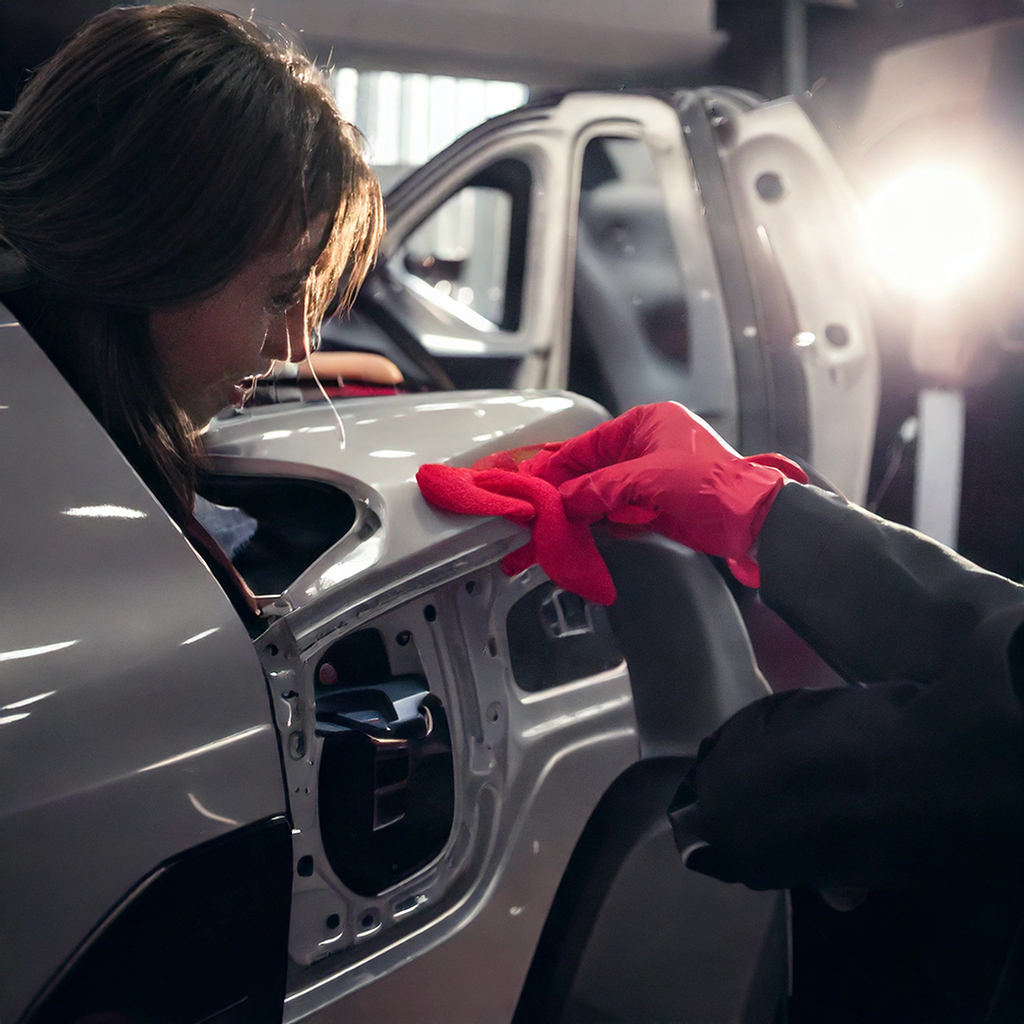Few weather events strike fear into car owners quite like a hailstorm. Those ice projectiles falling from the sky can transform your vehicle’s smooth surface into something resembling a golf ball in minutes. If you’ve recently experienced hail damage, here’s what you need to know about using Paintless Dent Removal as your repair solution.
The Unique Challenge of Hail Damage
Hail damage presents a distinct restoration challenge because it typically involves:
- Multiple dents of varying sizes across wide areas
- Damage on horizontal surfaces like the hood, roof, and trunk
- Potential for hundreds of individual impacts on a single vehicle
- Dents with clean, rounded profiles (ideal for PDR)
Why PDR Excels for Hail Damage Repair
Paintless Dent Removal has become the gold standard for hail damage restoration for several compelling reasons:
Preservation of Factory Finish: Hail typically doesn’t damage paint, making these dents perfect candidates for PDR, which maintains your vehicle’s original finish.
Cost-Effectiveness: Traditional body shop repairs for extensive hail damage can cost thousands more than PDR and potentially trigger total-loss determinations from insurance companies.
Time Efficiency: While conventional repairs might take weeks, PDR technicians can often complete full hail restorations in 2-4 days, depending on severity.
Comprehensive Coverage: Most insurance policies cover PDR for hail damage, often with reduced or waived deductibles compared to conventional repairs.
The PDR Process for Hail Damage
Repairing hail damage via PDR involves several specialized steps:
- Thorough Assessment: Using specialized lighting, technicians map every dent on the vehicle, often marking them with removable indicators.
- Panel Access: Interior trim pieces, headliners, and sometimes other components are carefully removed to gain access behind damaged panels.
- Methodical Repair: Technicians work systematically across the vehicle, typically starting with the most severely damaged areas.
- Quality Control: Multiple lighting angles are used to verify complete removal of all dents before reassembly.
When to Seek PDR for Hail Damage
The ideal time to address hail damage is as soon as possible after the storm. Here’s why:
- Prompt repair prevents environmental contaminants from potentially affecting exposed metal in microfractures
- Insurance claims are easier to process when damage is clearly attributable to a specific weather event
- After major storms, quality PDR technicians book up quickly
Working with Insurance for Hail Damage PDR
Most insurance companies now recognize PDR as the preferred method for hail damage repair. If you’re filing a claim:
- Document the damage immediately with photos
- Contact your insurance provider about their PDR coverage options
- Ask about PDR-specific estimators or preferred PDR shops
- Understand your deductible obligations
- Get a second opinion if the insurance adjuster suggests conventional repair methods
At Dent Doctor, we have extensive experience working with insurance companies on hail damage claims. Our team can help guide you through the claims process and provide the documentation needed to ensure your repair is covered appropriately.
Hail damage may look devastating, but with skilled PDR technicians, your vehicle can be restored to its pre-storm condition without compromising its original finish or value. Don’t let hail damage diminish your vehicle’s appearance or worth—contact us today to schedule your hail damage assessment.






